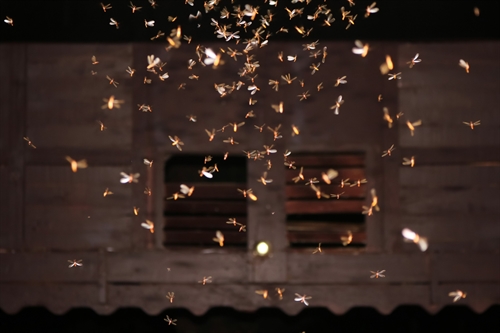There are few things more heartbreaking than discovering that your clothes have been attacked by moth. Clothes moths are small and drab, and their larvae even more so, and often the first you know about it is when you pull a cashmere sweater out at the start of winter and find it full of holes.
Know your moths
Only some fabrics are vulnerable to moth attack. It’s actually the larvae, rather than the little brown moths themselves, that make the holes – and they only eat certain fibres. The textiles favoured by moth larvae are:
- silk
- wool (including angora and cashmere)
- fur
- feathers
- leather
They will also eat garments that are made from a mix of these and plant-based or man-made fibres too. Moth larvae have also been known to go for leather. You can buy sticky moth traps and you can use these to check whether there are any adults flying around. If there are, you should take steps to eradicate them. Rentokil has a guide to the different varieties of clothes moth that will help you to recognise them if you see them.
There are several tactics you can use in your moth-prevention mission, and a combined approach is strongly recommended.
Wash in hot water
Moths are attracted to dirty fabrics, so it makes sense to store only clean clothing. Wash items according to the washing instructions, and dry in bright sunlight. Ironing will also kill eggs and larvae.
Go cold
Obviously some items cannot be safely washed, exposed to sun or ironed. Freezing may be an option. Put the item in a plastic bag, freeze for 48 hours, return to room temperature and freeze for another 48 hours. The second freezing is intended to catch larvae that were still eggs during the first freeze. You should take extra care with these delicate items and check them regularly for signs of moth damage.
Flick a duster around
Some moth larvae can feed on fluff and lint, and eggs could potentially be hiding on dust bunnies! So clean dust off furniture – and don’t forget to check inside cupboards and drawers.
Seal it up
If the female moths can’t get to your clothes, they cannot lay their eggs on them and there will be no larvae to make holes. Vulnerable items are best stored individually in sealed bags.
Keep it moving
Moth larvae do not like being disturbed, so it is worth turning out your stored clothing on a regular basis. Give them a shake, hold them up to the light – and who knows, you may find you fall back in love with a stored garment!
And remember…
Moths favour warm, damp conditions, so it is best to store items in a place where the temperature does not fluctuate.
Your storage unit, particularly if it is climate-controlled, should protect your possessions from moth and other infestations, but if for some reason it does not, your insurance policy will cover you. However, it will not provide coverage if your items were already infested with moth when you stored them, so make every effort to eradicate pests before you store your items.



